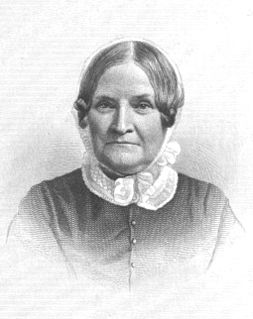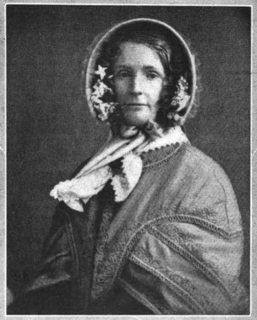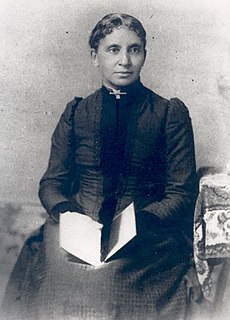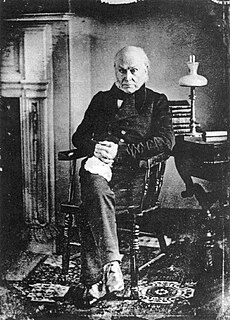
The Slave's Friend (1836-1838) was an anti-slavery magazine for children produced by the American Anti-Slavery Society (AASS). The short-lived magazine was the first abolitionist magazine targeted to a juvenile audience in the United States.

The Slave's Friend (1836-1838) was an anti-slavery magazine for children produced by the American Anti-Slavery Society (AASS). The short-lived magazine was the first abolitionist magazine targeted to a juvenile audience in the United States.
The American Anti-Slavery Society (AASS), established in 1833 by William Lloyd Garrison and Arthur Tappan, was one of the leading abolitionist organizations in the United States during the first half of the 19th Century. In June 1835 the AASS planned the launch of an array of publications to advance its anti-slavery agenda. These were to include three adult periodicals —The Emancipator,Human Rights,The Anti Slavery Record — as well as a monthly for young readers, The Slave's Friend. [1]
While these publications were to be available by subscription, free distribution was also planned, both in the free states of the North and the slave-owning states of the South. [1] To this end, donations were solicited for the launch of the new periodicals, and some $30,000 was quickly raised. [1]
| Part of a series on |
| Slavery |
|---|
 |
In 1836 the first issue of the children's magazine of the AASS, The Slave's Friend, saw print. [1] With a view to producing a periodical that could be comfortably handled by diminutive readers, a small physical format was used for the magazine. [2] A readership ranging in age from 6 to 12 appears to have been targeted by the editors. [2]
The magazine included a mix of original anti-slavery writing, poetry, and reprints of relevant material from other popular periodicals of the day. [2] Each issue of the publication included woodcut illustrations, which typically revolved around the theme of the cruelty and abuse which inevitably accompanied forced physical servitude. [2] These depictions of beatings and the implements of violence were frequently contrasted to other happier images of black and white children attending school and playing together. [2]
The Slave's Friend was an inexpensive publication, with a nominal price of just one cent per issue listed on the cover. [2] Some 200,000 issues of The Slave's Friend were distributed during the first year of the magazine's existence, with an additional sale of 5,000 bound volumes. [2]
The Slave's Friend was highly moralistic, equating slavery with sinfulness and making a strong religious appeal to its young readers. [2] The love and respect of parents was also propagandized as a core value. [3] The abolitionist cause was consistently depicted in pacifist and humanitarian terms rather than an objective to be obtained through forcible struggle. [4] All violent methods were foresworn and abolitionist activists described as "peacemakers." [4]
The publication made an effort to inculcate respectful language towards blacks among its targeted white readership. The 7th issue (1836) included a set of specific suggestions for appropriate discourse:
RESOLUTIONS.
With God's help I resolve,
1. Never to call a colored person A NEGRO. They do not like to be called so; and they think it is calling names.
2. Never to call a colored person, that BLACK FELLOW, or BLACKEY, or DARKEY. It is insulting to call them so.
3. Never to call a colored man a BOY. This is often done, and it is insulting and foolish.
4. To speak to colored people, and of them, just as I do to and of white people.5. Always to have respectful and kind feelings toward colored people. [5]
Circulation tailed off somewhat during the second year of The Slave's Friend, with a total of just over 130,000 copies circulated for the year — an average of just under 11,000 copies per issue. [2] These figures were roughly comparable to another magazine from the AASS stable, The Anti-Slavery Record. [2]
Efforts were made to establish a network of juvenile anti-slavery clubs by the AASS, and The Slave's Friend gave coverage in its pages to such efforts. [6] A sample constitution was published in the magazine's pages and membership dues of one cent per month were suggested. [6] Fundraising from adults to help subsidize the production of anti-slavery literature was given as one of the primary tasks of such children's organizations. [6]
A total of 38 numbers of the magazine were produced, with the final issue of the publication in 1838 assigned Volume IV, Number 2. [2] It is believed that financial problems were the primary reason for the magazine's demise. [2] The entire press of the American Anti-Slavery Society folded by the end of the decade of the 1830s and the organization itself virtually disappeared. [7]

Abolitionism, or the abolitionist movement, was the movement to end slavery. In Western Europe and the Americas, abolitionism was a historic movement that sought to end the Atlantic slave trade and liberate the enslaved people.
David Walker was an American abolitionist, writer, and anti-slavery activist. Though his father was enslaved, his mother was free; therefore, he was free as well. In 1829, while living in Boston, Massachusetts, with the assistance of the African Grand Lodge, he published An Appeal to the Colored Citizens of the World, a call for black unity and a fight against slavery.

The American Anti-Slavery Society was an abolitionist society founded by William Lloyd Garrison and Arthur Tappan. Frederick Douglass, an escaped slave, had become a prominent abolitionist and was a key leader of this society, who often spoke at its meetings. William Wells Brown, also a freedman, also often spoke at meetings. By 1838, the society had 1,350 local chapters with around 250,000 members.

Angelina Emily Grimké Weld was an American abolitionist, political activist, women's rights advocate, and supporter of the women's suffrage movement. She and her sister Sarah Moore Grimké are the only white Southern women who became abolitionists. The sisters lived together as adults, while Angelina was the wife of abolitionist leader Theodore Dwight Weld.

Lydia Maria Child, was an American abolitionist, women's rights activist, Native American rights activist, novelist, journalist, and opponent of American expansionism.

Maria Weston Chapman was an American abolitionist. She was elected to the executive committee of the American Anti-Slavery Society in 1839 and from 1839 until 1842, she served as editor of the anti-slavery journal The Non-Resistant.

James Gillespie Birney was an American abolitionist, politician, and attorney born in Danville, Kentucky. He published an abolitionist weekly publication titled The Philanthropist and twice served as the presidential nominee for the anti-slavery Liberty Party.

The Liberator (1831–1865) was a weekly abolitionist newspaper, printed and published in Boston by William Lloyd Garrison and, through 1839, by Isaac Knapp. Religious rather than political, it appealed to the moral conscience of its readers, urging them to demand immediate freeing of the slaves ("immediatism"). It also promoted women's rights, an issue that split the American abolitionist movement. Despite its modest circulation of 3,000, it had prominent and influential readers, including Frederick Douglass and Beriah Green. It frequently printed or reprinted letters, reports, sermons, and news stories relating to American slavery, becoming a sort of community bulletin board for the new abolitionist movement that Garrison helped foster.

Charlotte Louise Bridges Forten Grimké was an African American anti-slavery activist, poet, and educator. She grew up in a prominent abolitionist family in Philadelphia. She taught school for years, including during the Civil War, to freedmen in South Carolina. Later in life she married Francis James Grimké, a Presbyterian minister who led a major church in Washington, DC, for decades. He was a nephew of the abolitionist Grimké sisters and was active in civil rights.

John Rankin was an American Presbyterian minister, educator and abolitionist. Upon moving to Ripley, Ohio, in 1822, he became known as one of Ohio's first and most active "conductors" on the Underground Railroad. Prominent pre-Civil War abolitionists William Lloyd Garrison, Theodore Weld, Henry Ward Beecher, and Harriet Beecher Stowe were influenced by Rankin's writings and work in the anti-slavery movement.

The North Star was a nineteenth-century anti-slavery newspaper published from the Talman Building in Rochester, New York, by abolitionist Frederick Douglass. The paper commenced publication on December 3, 1847, and ceased as The North Star in June 1851, when it merged with Gerrit Smith's Liberty Party Paper to form Frederick Douglass' Paper. At the time of the Civil War, it was Douglass' Monthly. The North Star's slogan was: "Right is of no Sex—Truth is of no Color—God is the Father of us all, and all we are Brethren."

Elizabeth Margaret Chandler was an American poet and writer from Pennsylvania and Michigan. She became the first female writer in the United States to make the abolition of slavery her principal theme.
William Goodell was an abolitionist and reformer born in Coventry, New York on October 3, 1792.
The Emancipator (1833–1850) of New York City was an American abolitionist newspaper. It was the official newspaper of the American Anti-Slavery Society (AASS). From 1840 to 1850 it was published by the Liberty Party and changed names several times as it merged with other abolitionist newspapers in Boston.
The Cincinnati Riots of 1836 were caused by racial tensions at a time when African Americans, some of whom had escaped from slavery in the southern states of the United States, were competing with whites for jobs. The racial riots occurred in Cincinnati, Ohio, United States in April and July 1836 by a mob of whites against black residents. These were part of a pattern of violence at that time. A severe riot had occurred in 1829, led by ethnic Irish, and another riot against blacks broke out in 1841. After the Cincinnati riots of 1829, in which many African Americans lost their homes and property, a growing number of whites, such as the "Lane rebels" who withdrew from the Cincinnati Lane Theological Seminary en masse in 1834, over the issue of abolition, became sympathetic to their plight. The anti-abolitionist rioters of 1836, worried about their jobs if they had to compete with more blacks, attacked both the blacks and white supporters.

Like most contemporaries, John Quincy Adams' views on slavery evolved over time. Historian David F. Ericson asks why he never became an abolitionist. He never joined the movement called "abolitionist" by historians—the one led by William Lloyd Garrison—because it demanded the immediate abolition of slavery and insisted it was a sin to enslave people. Further, abolitionism meant disunion and Adams was a staunch champion of American nationalism and union.

Abolitionism in the United States was a movement which sought to end slavery in the United States, being active from the colonial era until the American Civil War, which saw the abolition of American slavery. The abolitionist movement originated in Western Europe during the Age of Enlightenment, seeking to end the transatlantic slave trade and outlaw the institution of slavery in European colonies in the Americas. In Colonial America, German settlers issued the 1688 Germantown Quaker Petition Against Slavery, which would initiate the American abolitionist movement. Before the Revolutionary War, evangelical colonists were the primary advocates for the abolition of slavery and the slave trade, doing so on humanitarian grounds. Georgia, the last of the Thirteen Colonies to be established, originally prohibited slavery upon its founding, a decision which was eventually reversed.

The Anti-Slavery Alphabet is an alphabet book published in 1846 by the Philadelphia Female Anti-Slavery Society (PFASS). It was written by two of the society's members, Hannah and Mary Townsend, with the intention of encouraging abolitionist ideas in young children.
Reuben Crandall, younger brother of educator Prudence Crandall, was a physician who was arrested in Washington, D.C., on August 10, 1835, on charges of "seditious libel and inciting slaves and free blacks to revolt", the libels being abolitionist materials portraying American slavery as cruel and sinful. He was nearly killed by a mob that wanted to hang him, and avoided that fate only because the mayor called out the militia. The Snow Riot ensued. Although a jury would find him innocent, his very high bail meant he remained in the Washington jail for almost eight months, where he contracted tuberculosis. He died soon after his release.
Hester Lane was an American abolitionist, philanthropist, entrepreneur, and political activist. Born into slavery in Maryland, she settled down in New York as a free woman. Lane was known in New York for her approach to adding color pigment to walls using whitewash, freeing slaves in Maryland through purchasing them, and the controversy surrounding her failed nomination to the American Anti-Slavery Society. She died in July 1849 during the cholera epidemic.